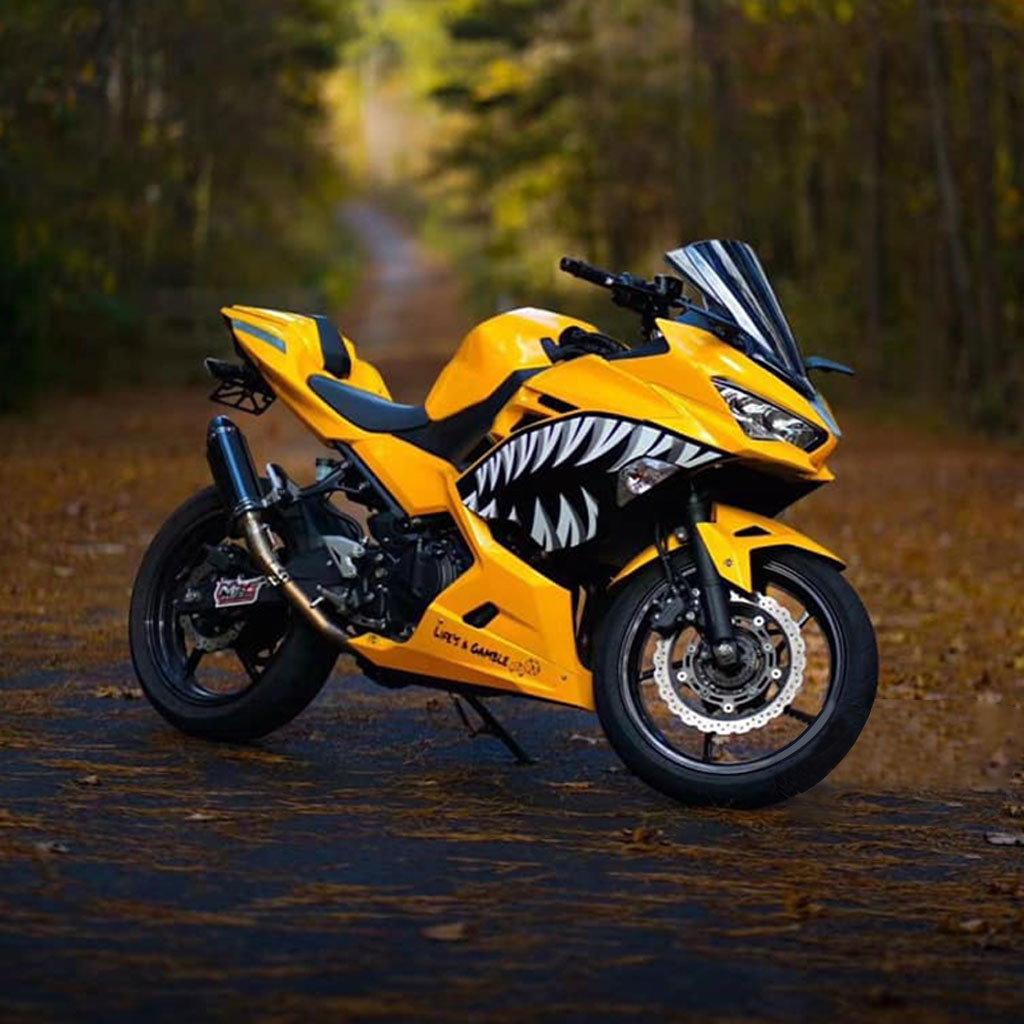How to Fix a Damaged Motorcycle Fairing After an Accident
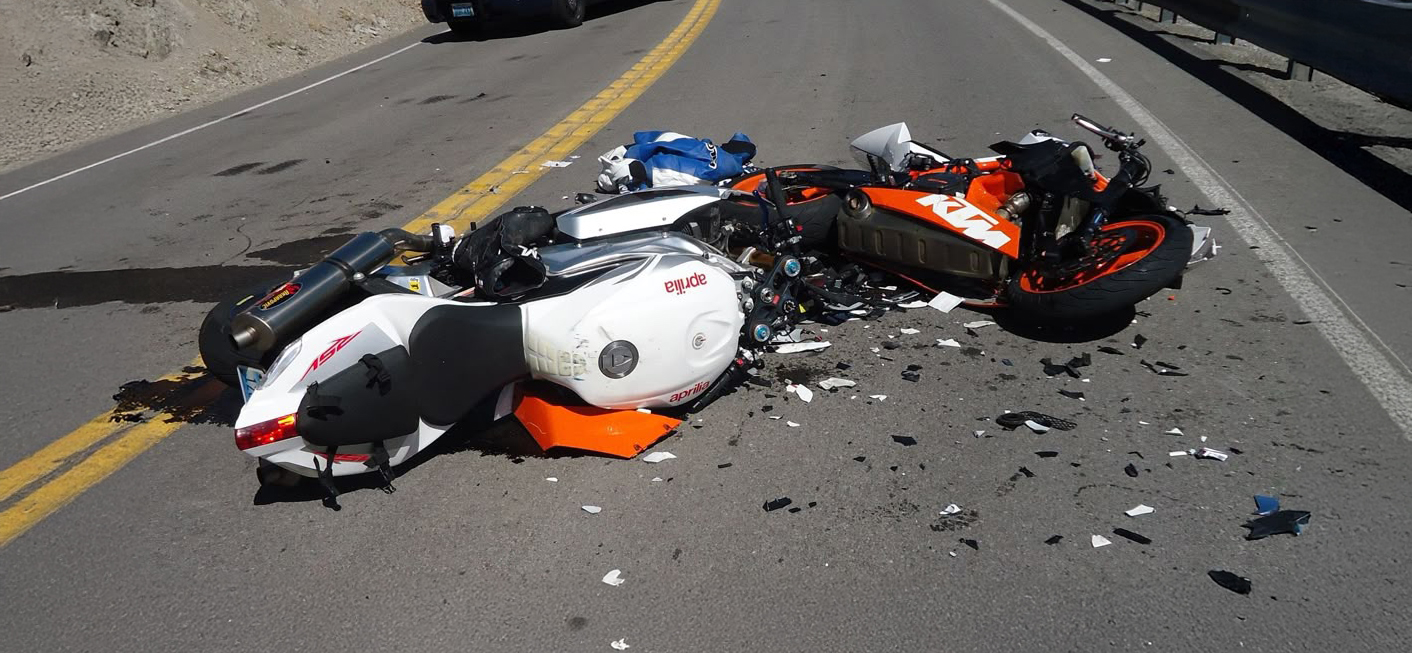
Accidents happen, and when they do, your motorcycle’s sleek look can take a hit. A damaged motorcycle fairing doesn’t just ruin its appearance; it can also affect how well your bike performs. The good news? You don’t always need to replace it. With the right tools, you can fix most issues yourself. Whether it’s a crack or a dent, repairing it can save you money and keep your bike looking great.
Key Takeaways
Fixing your motorcycle fairing can save money and keep it looking nice after a crash.
Check the damage type—small cracks or scratches can be fixed at home, but big problems might need a pro.
Use proper tools and materials, like ABS glue or repair kits, for strong repairs.
Check and care for your fairings often to avoid more damage and keep your bike in good shape.
Buy good fairings, like ones from Nicefairings, to protect your bike and make it work better.
Understanding Motorcycle Fairings
What is a motorcycle fairing?
A motorcycle fairing is the outer cover of your bike. It protects parts like the engine and frame. Most fairings are made from light materials like ABS plastic or fiberglass. They are not just for looks—they improve your ride. Fairings cut wind resistance and shield important bike parts.
Think of it as armor for your motorcycle. It keeps dirt, debris, and small impacts away. If you’ve seen a cool sports bike, its fairings likely add to its stylish design.
Importance of fairings (protection, aerodynamics, aesthetics)
Fairings do more than make your bike look cool. They are important for three reasons:
Protection: Fairings guard your bike’s parts from dirt, weather, and damage.
Aerodynamics: They reduce air drag, helping your bike go faster and save fuel.
Aesthetics: Fairings give your bike its unique style. Whether sporty or classic, they make it stand out.
Without fairings, your bike may feel shaky at high speeds and look less neat.
Common types of damage after an accident
Accidents can harm your motorcycle fairing. Here are common problems you might see:
Cracks: Crashes often cause cracks, big or small, that weaken the fairing.
Scratches: Even small falls can leave ugly marks on the surface.
Dents: Hard hits can bend the fairing, ruining its shape.
Broken mounts: Brackets or screws holding the fairing can break, leaving it loose.
Tip: Always check your fairings after a crash. Small cracks can grow and cause bigger issues later.
Knowing the damage type helps you decide how to fix it. Some repairs are simple, but others may need a professional.
Materials Used in Motorcycle Fairings
Overview of materials (ABS plastic, fiberglass, carbon fiber)
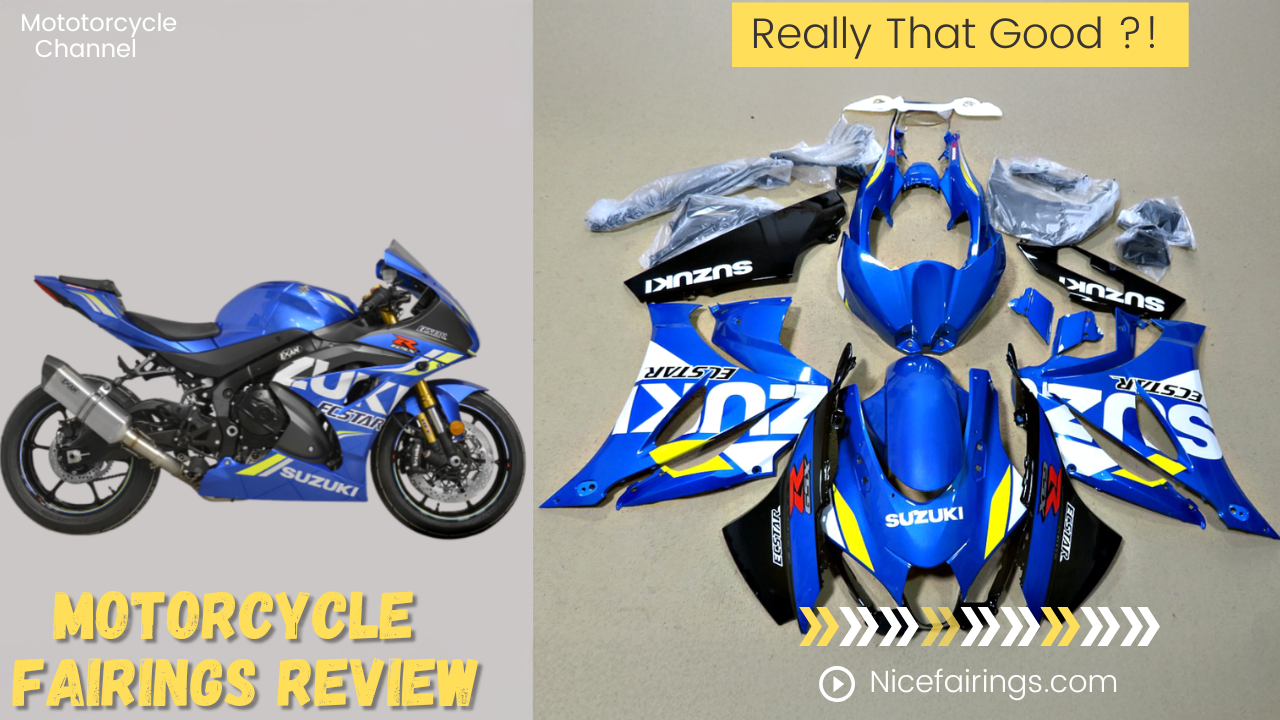
Motorcycle fairings are made from different materials. Each has special features. Here's a simple guide:
Material | Characteristics | Usage Context |
|---|---|---|
Carbon Fiber | Very light, saves fuel, costly, easily breaks | Best for racing and high-speed sports bikes |
ABS Plastic | Strong, tough, bendable, light, most popular | Common in both new and replacement fairing kits |
Fiberglass | Made of woven fibers, lighter than ABS, easy to fix | Used to strengthen other materials, balancing weight and repairability |
Each material is chosen for a reason. For example, carbon fiber is great for racing because it’s super light. ABS plastic is better for daily use since it’s strong and affordable.
Why ABS plastic is commonly used
ABS plastic is the most popular choice for motorcycle fairings. Why? It’s strong, flexible, and lightweight.
Strength: It can take hits without breaking quickly.
Flexibility: Makers can design smooth, aerodynamic shapes with it.
Lightweight: Lighter fairings improve fuel use and handling.
Durability: It stands up to weather and scratches over time.
Aesthetic Appeal: It makes your bike look cool while protecting it.
It’s also budget-friendly, which is why it’s used so much. Whether you’re riding on highways or city roads, ABS plastic fairings are built to last.
How material type impacts the repair process
The type of fairing material affects how you fix it. ABS plastic is the easiest to repair. You can use plastic welding or special glue like ABS cement. These work well because ABS bonds easily.
Fiberglass fairings can also be fixed but need a different method. You’ll need epoxy resin and fiberglass cloth to repair cracks or holes. Fiberglass is light but more fragile than ABS.
Carbon fiber is harder to fix. It’s light but damages easily. Fixing it often needs experts and special tools.
Tip: Start with small cracks or scratches when fixing ABS plastic fairings. It’s cheaper and easier than replacing the whole fairing.
Step-by-Step Guide to Repair ABS Plastic Motorcycle Fairings
Cleaning and Getting the Damaged Area Ready
Before fixing your motorcycle fairing, you must prepare it. Good prep makes the repair last longer. Follow these steps:
Take off the damaged part: Remove the cracked or broken fairing from your bike. This gives you more space to work.
Clean the surface: Wash off dirt, grease, or dust with water and a sponge. A clean area helps the repair stick well.
Smooth rough edges: Use sandpaper to gently rub the cracked edges. This removes sharp bits and helps the repair material hold better.
Align the cracks: Stick aluminum tape over the cracks to keep them in place. This ensures the repair fills the gaps evenly.
Tip: Always clean the area first. Dirt or grease can weaken the repair and cause it to fail.
Tools and Materials You’ll Need
Having the right tools makes fixing easier. Here’s what you should have:
Tool/Material | What It’s For |
|---|---|
Soldering Iron | Melts plastic to fix cracks. |
Aluminum Tape | Keeps cracks steady during the repair. |
Body Filler Putty | Fills gaps and smooths the surface. |
Sandpaper | Prepares and smooths the repaired area. |
Paint | Matches the fairing’s color after repair. |
Some kits also include special glues like ABS cement or PlastiFix. These are great for fixing ABS plastic cracks.
Note: For bigger repairs, use heat-resistant fillers like P-78. They last longer and are stronger.
Method 1: Plastic Welding
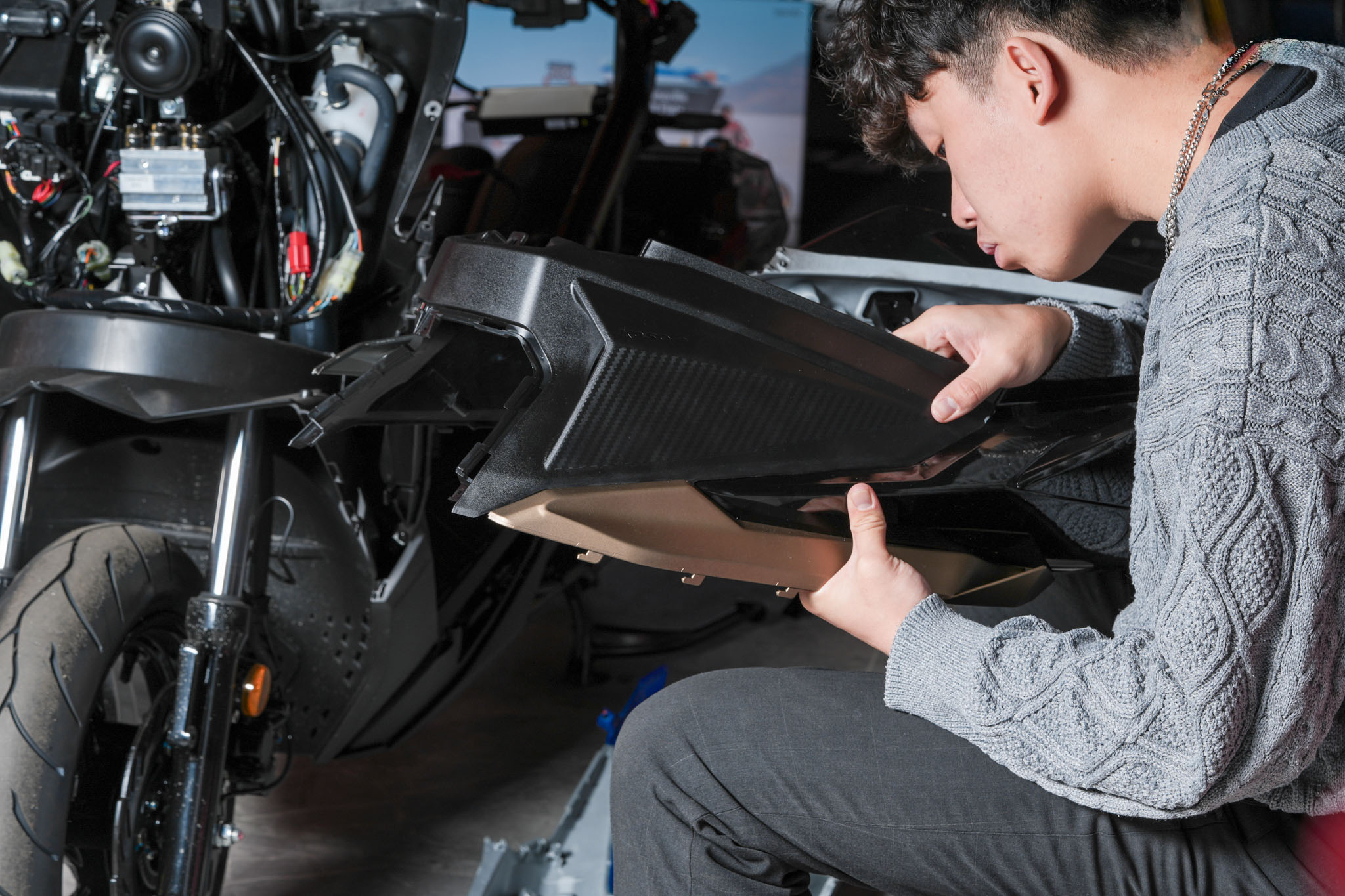
Plastic welding is a strong way to fix ABS plastic fairings. It creates a tough bond that handles stress and weather well. Here’s how to do it:
Step 1: Melt the plastic: Heat a plastic cable tie with a soldering iron. This will act as filler for the crack.
Step 2: Fix the crack: Slowly move the soldering iron along the crack. Push the melted plastic into the gap to seal it.
Step 3: Smooth it out: Let the weld cool, then sand the area to remove bumps and make it even.
Step 4: Add paint: Paint over the repair to match the fairing’s original color. This protects the area and makes it look new.
Tip: Plastic welding works best on ABS plastic because it bonds strongly, almost like the original material.
Plastic welding is cheap and long-lasting. If done right, it can handle vibrations, heat, and even chemicals.
Method 2: Using a repair kit (e.g., PlastiFix)
Want an easy way to fix your motorcycle fairing? A repair kit like PlastiFix is a great choice. These kits work well on hard plastics like ABS. They can fix cracks or even rebuild broken parts. Here’s how to use one:
Clean the area: Wash off dirt and grease. Sand the crack edges to make them smooth.
Mix the solution: Combine the liquid and powder from the kit. Follow the instructions to make a strong glue.
Apply the mixture: Use the tool in the kit to fill cracks or gaps. For missing parts, use the molding bar to shape and cast new pieces.
Let it dry: Wait for the material to harden completely. This step is very important.
Smooth the surface: Sand the repaired area until it matches the rest of the fairing.
Tip: PlastiFix works best on ABS plastics. It’s also good for fixing stripped threads or making repairs stronger.
Repair Method | Material | Effectiveness |
|---|---|---|
Epoxy Filler | ABS, ABS/polycarbonate blends, Nylon | Great for fixing plastic parts |
PlastiFix | Rigid Plastics (including ABS) | Good for cracks, gaps, and rebuilding tabs |
Using a repair kit is cheap and simple. It’s perfect for beginners who want to fix their fairing without much hassle.
Method 3: Using adhesives like ABS cement
ABS cement is another easy way to fix ABS plastic motorcycle fairings. It creates a strong bond by chemically joining the plastic. Here’s how to use it:
Clean the crack: Wash the area to remove dirt and grease. This helps the cement stick better.
Apply the cement: Use a small brush to spread the cement along the crack. Cover the entire crack evenly.
Press the edges together: Push the crack edges together and hold them for a few minutes. This helps the cement set.
Add more cement: Apply another layer of cement over the repair for extra strength.
Let it dry: Wait for the cement to fully harden. Check the product instructions for drying time.
Note: ABS cement works best for small cracks. For bigger damage, combine it with a repair kit or plastic welding for better results.
This method is quick, cheap, and works well for minor repairs. It’s a great option for small fixes on ABS plastic fairings.
Sanding, painting, and finishing the repair
After fixing the damage, make your fairing look new again. Sanding, painting, and finishing are key steps. Follow these instructions:
Sand the repair: Start with medium-grit sandpaper to smooth the area. Then use finer sandpaper for a smooth finish. This helps the paint stick better.
Use primer: Spray a plastic primer on the area. This creates a good base for the paint.
Paint the fairing: Spray thin layers of paint that match your bike’s color. Let each layer dry before adding the next.
Add a clear coat: Finish with a clear lacquer to protect the paint. This makes it shiny and durable.
Polish the surface: Once dry, polish the area for a smooth and glossy look.
Pro Tip: Take your time sanding. A smooth surface makes the paint job look professional.
By following these steps, your fairing will look great again. Finishing not only improves the look but also protects the repair for years.
DIY Repair vs. Professional Help
Things to think about (damage, tools, experience)
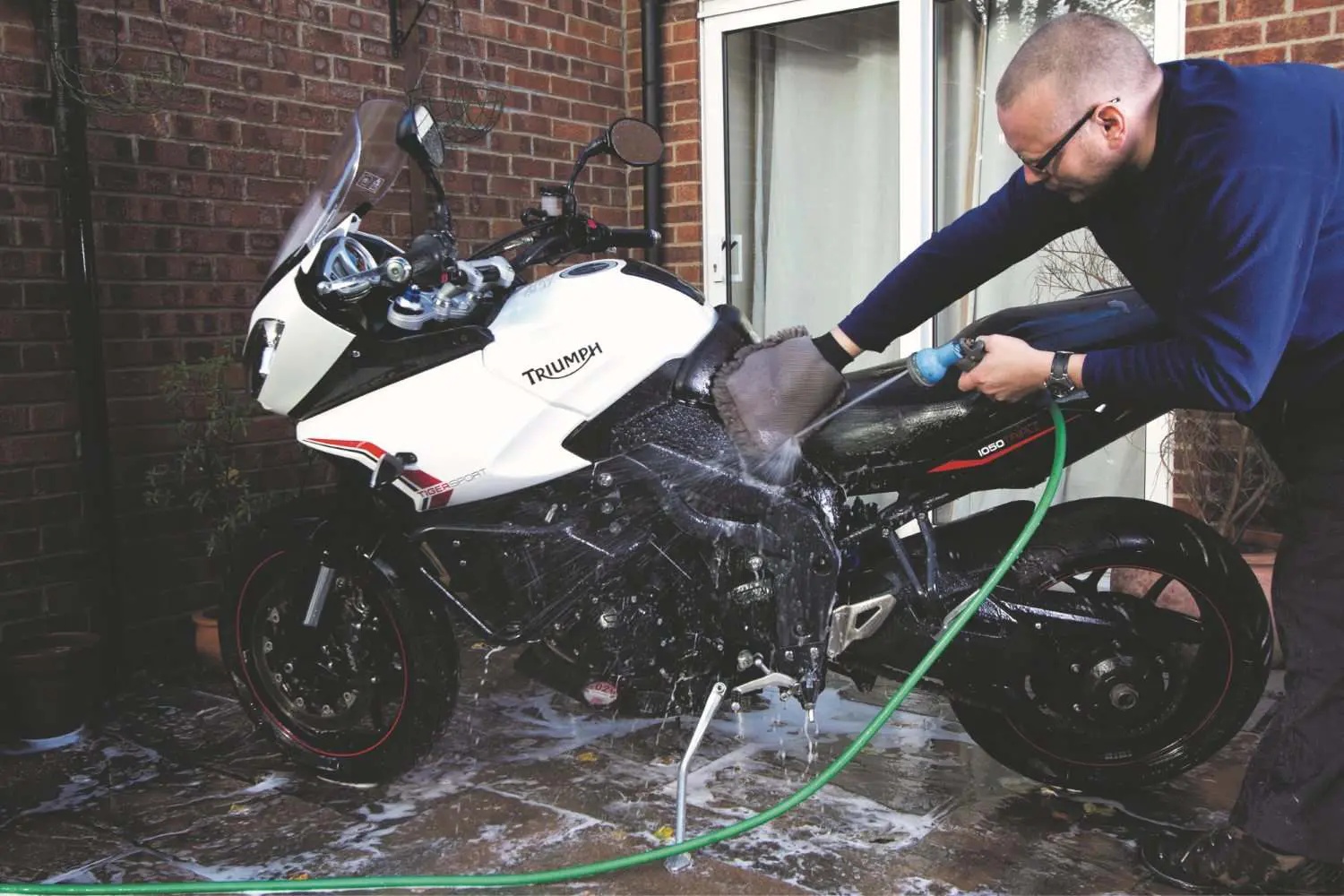
Deciding to fix your motorcycle fairings yourself or hire help depends on a few things. First, check how bad the damage is. Is it just a small crack or scratch? If yes, you can probably fix it yourself. But if the fairing is broken into pieces or has many cracks, it might be too hard to do alone.
Next, look at your tools. Do you have a soldering iron, sandpaper, or a repair kit? If not, you’ll need to buy or borrow them. Without the right tools, even easy repairs can become tricky.
Lastly, think about your skills. Have you fixed motorcycle fairings before? If you’re okay with simple repairs and following steps, you can try. But if you’re unsure or afraid of making it worse, it’s better to ask a professional.
Tip: Start with small repairs. Fix tiny cracks or scratches first to build confidence.
Why DIY repair is great
Fixing your motorcycle fairings yourself has cool benefits. First, it saves money. Hiring a pro can cost a lot, even for small fixes. Doing it yourself means you only pay for tools and materials.
Second, you learn new skills. These skills can help you with future repairs. Plus, it feels good to fix something on your own.
Third, you’re in control. You pick the materials, take your time, and make sure it’s done right. No need to worry about someone rushing the job.
Pro Tip: Watch online videos for help. Many bikers share easy guides for fixing fairings.
When to let a pro handle it
Sometimes, it’s smarter to let an expert fix it. If the damage is really bad—like a totally broken fairing or big structural problems—get professional help. They have the tools and know-how to fix it properly.
Also, if you don’t have time or patience, a pro is a good choice. Repairs can take hours, especially if you’re new to it. A professional can finish faster and make it look perfect.
Lastly, if your fairings are made of tricky stuff like carbon fiber, leave it to an expert. Fixing carbon fiber needs special tools and skills that aren’t easy for beginners.
Note: Pick a trusted repair shop. Read reviews and ask friends to find a good one.
Preventing Future Fairing Damage
Ways to Protect Your Fairings (e.g., frame sliders, careful parking)
Keeping your motorcycle fairings safe is easy with a few steps. Adding frame sliders is one of the best ways to protect them. These sliders are made from materials like plastic, aluminum, or carbon fiber. They take the hit if your bike falls, reducing damage to the fairings. Many riders say sliders saved them from expensive repairs. Studies even show bikes with sliders have 30% less damage than those without.
Parking carefully is another simple way to avoid damage. Always park on flat, stable ground to stop your bike from tipping over. In busy areas, leave enough space so others don’t bump into your motorcycle. These small actions can help keep your fairings in great shape.
Check and Maintain Regularly
Checking your bike often helps prevent future problems. Before every ride, spend a few minutes looking for loose screws, cracks, or scratches on the fairings. Spotting issues early can stop them from getting worse.
Here’s an easy maintenance checklist:
Task | How Often |
|---|---|
Look for damage or wear | Before every ride |
Check tire pressure | Weekly |
Clean your bike | Regularly |
Change the oil | As needed |
Inspect and adjust brakes | Regularly |
Following this schedule keeps your fairings safe and your bike running well.
Buy Strong Fairings Like Nicefairings
Starting with tough fairings is a smart way to avoid damage. High-quality fairings, like those from Nicefairings, are built to last. They protect your bike’s important parts and look great too. Materials like carbon fiber are strong and resist wear and tear. They also improve how your bike moves by cutting wind resistance, making it more stable at high speeds.
Good fairings are a smart investment for your bike. They lower the chance of damage and can even boost your bike’s resale value. Nicefairings also let you pick custom designs to match your style while keeping your bike safe.
Tip: Spending on durable fairings now saves money later by avoiding frequent replacements.
Fixing a broken motorcycle fairing isn’t too hard. With proper tools and steps, you can fix most problems yourself. Methods like plastic welding or repair kits work well for small damages. But if the damage is big, it’s better to ask a professional for help.
To keep your bike looking good, take care of it often. Buy strong fairings, like Nicefairings, to protect your motorcycle and avoid future fixes. These tips will keep your bike safe and looking cool for a long time.
FAQ
How can I tell if my motorcycle fairing can be fixed?
Look at the damage. Small cracks, scratches, or dents can be fixed. If it’s broken into pieces or has big problems, you might need a new one.
Can I repair my fairing after a crash?
Yes, you can! Try plastic welding or repair kits for small damage. For bigger problems, it’s best to ask a professional to fix it.
What tools do I need to fix a fairing myself?
You’ll need sandpaper, a soldering iron, body filler, and paint. Repair kits like PlastiFix or ABS cement are also helpful for cracks and gaps.
How long does it take to fix a fairing?
DIY repairs usually take a few hours, depending on the damage. Professionals can do it faster, especially for harder repairs.
How can I stop my fairing from getting damaged again?
Use frame sliders to protect your bike if it falls. Park safely and check your motorcycle often to find problems early.
See Also
A Guide to Replacing and Repairing Motorcycle Fairings
Tips for Safeguarding Your Motorcycle Fairings from Damage
DIY Custom Motorcycle Fairings: Create Your Own Design
Essential Tips for Cleaning and Maintaining Motorcycle Fairings
